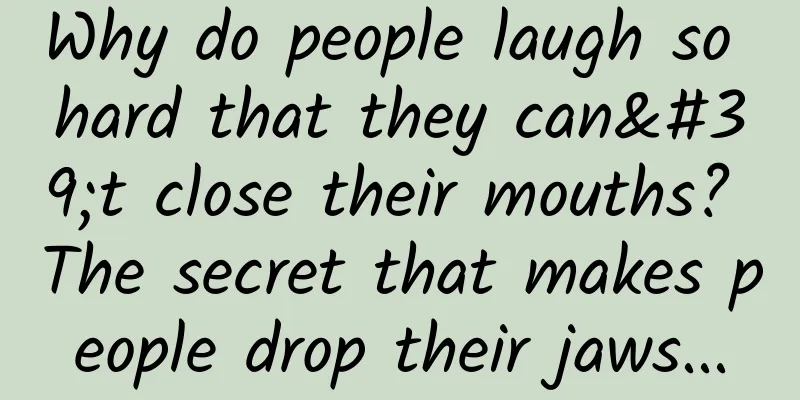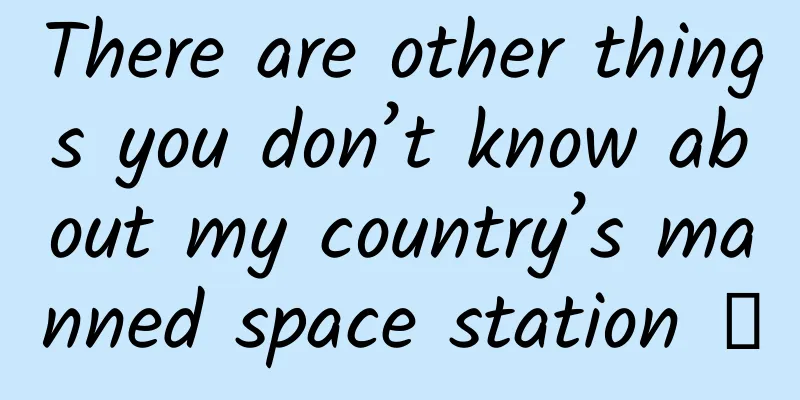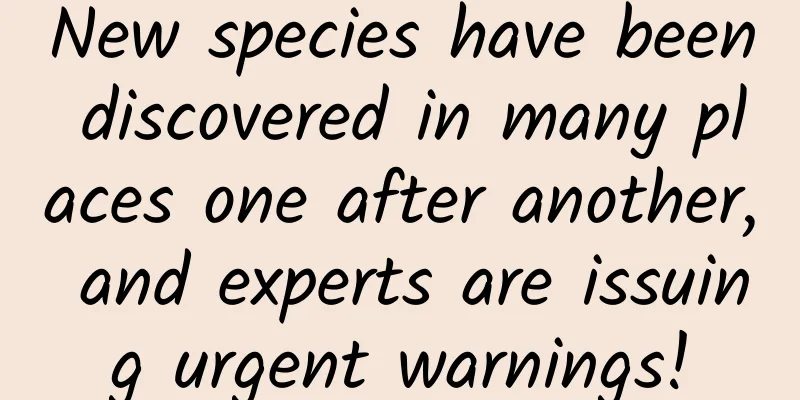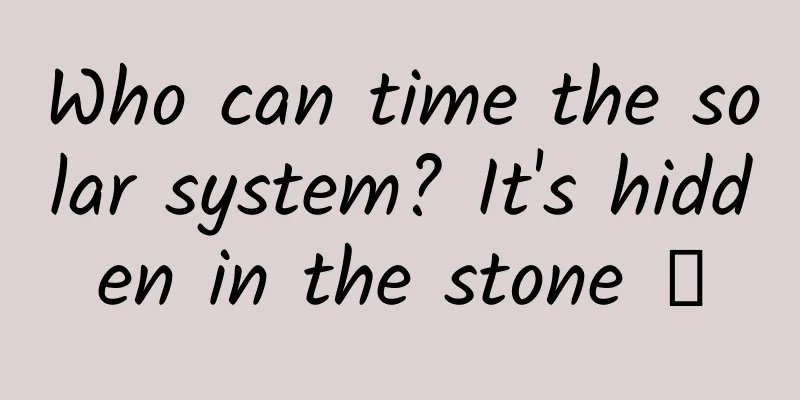Why do people laugh so hard that they can't close their mouths? The secret that makes people drop their jaws...

|
"Hahaha, I can't stop, I can't stop laughing!" In life, we often laugh out loud and lose control when we encounter something particularly funny. But don't just focus on laughing, "laughing out loud" is sometimes not just an exaggeration, if you are not careful, your jaw may really "drop" (Figure 1)! Don't disbelieve me, let me explain it slowly. Figure 1 “Laughing so hard that one can’t close one’s mouth” – the jaw really “dropped”! 1. Some people really laughed their jaws off! Previously, a celebrity named Wang * Xin was laughing so hard while playing a game on a variety show that his jaw suddenly dislocated and he had to be rushed to the hospital (Figure 2). Figure 2 The actor's variety show "comedy" effect - "laughing so hard that you can't close your mouth" This incident was a hot topic at the time, and everyone was shocked (hey, this word is really appropriate). In fact, in life, such "jaw-dropping" and "jaw-dropping" situations, although not common, are not isolated cases. Once, Xiao Li was having a party with his friends. His friend told a very funny joke and he was laughing so hard that he fell backwards. Suddenly, he felt a click in his chin. Then his chin became uncontrollable. His mouth opened wide and could not be closed (Figure 3). His speech was unclear and everyone was scared. Figure 3: Laughing out loud This "dropped jaw" is medically called temporomandibular joint dislocation, which is also a more serious condition in temporomandibular joint disorder (TMD). From a biomechanical point of view, when laughing excessively, the movement of the mandible at the temporomandibular joint exceeds the normal physiological range, breaking the original stable mechanical balance of the joint, which can easily cause dislocation. 2. What is temporomandibular joint disorder syndrome? First, let’s get to know the protagonist of today: the temporomandibular joint (TMJ). This joint is located in front of your ear and is the key part connecting the mandible and the skull (Figure 4). Figure 4 Temporomandibular joint Although it is small in size, its role and workload are not small! It is like a "universal hinge" that is responsible for all your actions of opening and closing your mouth, chewing, talking, and even yawning (Figure 5). Figure 5 The temporomandibular joint is like a "universal hinge" The structure of TMJ is very delicate: Mandibular condyle: A small, ball-like projection on the mandible. Temporal fossa: A groove in the skull that accommodates the condyle. Articular disc: A piece of fibrous cartilage that acts like a small cushion to cushion the friction between the condyle and the socket. Muscles and ligaments: responsible for controlling the movement and stability of joints. If you overuse it, it will stop working! If there is a problem with this joint, that is, TMD, it will be troublesome. TMD has various manifestations. Some people may feel joint pain, especially when opening or closing their mouths or chewing, the pain is more obvious, as if there is a small needle pricking them; some people can hear a "clicking" sound from the joints when opening their mouths, like the sound of an old wooden door opening and closing; more seriously, they may have limited mouth opening. Under normal circumstances, our mouths can be opened wide enough to fit three fingers, but with this disease, it may be difficult to fit two fingers; some people cannot close their mouths when opening or closing their mouths, and their faces or chins look crooked, which seriously affects their appearance (Figure 6). In addition, some patients may also experience symptoms such as dizziness, headaches, and tinnitus, which is simply "misfortunes never come alone." Figure 6 The "universal hinge" made a "clicking" sound TMD is particularly common among young people, especially those aged 20 to 45. Women are more susceptible to TMD than men, with a male-female ratio of about 3:7. The biomechanical principle behind this is that young people have frequent daily activities, use the temporomandibular joint more frequently, and bear relatively greater pressure. Women's temporomandibular joint structure may be relatively slender, and when facing the same external pressure, they are more likely to have mechanical imbalance. 3. Why do we “laugh so hard that we can’t close our mouths”? — Biomechanics Revealed Let's talk about articular disc displacement first. MRI studies have found that the probability of articular disc displacement in people with TMD can reach 30% - 50%. When you laugh, your mouth opens wide, and the articular disc is like a naughty little cushion. It may move forward or dislocate, and the condyle can't find its "nest", so the mouth can't close. This is like a broken door lock, you can't go home, and you can only worry outside the door. Let's talk about muscle spasms. Electromyography studies have shown that people with TMD have abnormal masticatory muscle activity and are prone to spasms. When you laugh, these muscles are overexcited and work hard, and then they become tired and stop working, and your mouth becomes stiff, just like when you finish a marathon and your legs are out of control and too stiff to move. There are also changes in the pressure inside the joint cavity. The joint cavity is like a balloon. If you laugh too hard and open your mouth too hard, the pressure inside will change, and the joint disc may be "sucked" and your mouth will not be able to close. It's just like blowing a balloon too hard, and the balloon mouth will be pressed together by the air pressure and cannot be separated. Finally, it is about pain and nerve reflex. People with TMD have severe pain in their joint capsules and ligaments due to inflammation or damage. The brain senses the pain and immediately issues a "don't move" command, so the mouth freezes there, just like a hand that is burned by fire and instinctively retracts immediately. When laughing, TMJ can experience a "biomechanical storm", opening the mouth too wide, muscles working crazily, and joint pressure soaring. If TMJ is healthy, this storm is a piece of cake, but if there is TMD, then trouble comes, joint disc jamming, muscle spasm, negative pressure in the joint cavity, all of which may make it impossible to close the mouth. So, sometimes when you can't close your mouth when you laugh, it's not because you are too happy, but because your body is having a "little temper". For further reading, please follow the articles on my personal WeChat public account “Medical Biomechanics”: Red tube, white stick, open mouth, and test nucleic acid. IV. TMD: Why do we get it? How to treat it? How to prevent it? 1. Why do you get TMD? The causes of TMD are a complex puzzle, but from a biomechanical perspective, many factors are related to the forces exerted on the joints. Mental stress: Modern life is fast-paced and stressful. Anxiety and tension can make the chewing muscles tense and break the mechanical balance of the joints. For example, Xiao Zhang, a new employee in the workplace, works overtime every day and is under great pressure. As a result, his jaw hurts and his joints make noises. After a checkup, he found that he had TMD. Immune system disruption: If the immune system "recognizes the wrong person" and attacks its own temporomandibular joint, it will cause inflammation and change the mechanical properties around the joint. Excessive joint load: People who like to eat hard things (such as nuts, sugar cane) or chew gum often have their joints work at high intensity for a long time, which is easy to wear out. Chewing on one side is even worse, just like carrying heavy objects with one hand all the time, the joints are unevenly stressed and will be tired sooner or later. Congenitally bad joints: Some people are born with poorly developed joints, such as shallow fossa or abnormal condyle shape, which can easily lead to "deviating" joints during movement, increasing the risk of disorder. 2. How to treat TMD? There are many different approaches to treating TMD, with the goal of restoring normal joint mechanics. Get rid of bad habits: Don't chew on one side, don't chew gum all the time, use your tongue to press against the roof of your mouth when yawning to prevent your mouth from opening too wide. Don't sleep on your stomach or support your chin with your hands. Relax: When you are under a lot of stress, try meditation and relaxation training to relax tense chewing muscles and restore the mechanical balance of the joints. Medication can help: If the pain is severe, your doctor may prescribe anti-inflammatory pain medication or muscle relaxants to reduce inflammation and muscle tension. Physical therapy: Heat, massage, and physical therapy can relieve pain and improve joint function. Heat promotes blood circulation, massage relaxes muscles, and physical therapy regulates bioelectric activity around joints. Functional training: By opening and closing the mouth, moving the jaw left and right, etc., the strength of the masticatory muscles is enhanced and the joint movement function is improved. Traditional Chinese Medicine conditioning: Acupuncture, massage, and external application of Chinese medicine can also relieve symptoms, regulate the circulation of Qi and blood, and improve the mechanical state of joints. Bite splint or bite adjustment therapy: Bite splints can adjust the occlusion relationship of teeth and relieve joint pressure. Bite adjustment therapy adjusts the shape and position of teeth to make the bite more reasonable. Surgery (last option): If other methods have not worked, you may need a joint injection, arthroscopic surgery, or even open surgery to directly repair the joint structure. 3. How to prevent TMD? The key to preventing TMD is to develop good living habits and maintain the normal mechanical state of the joints. Chew correctly: Use both sides of your teeth when eating, don't chew on one side. Eat less hard food, and don't chew gum for too long. Maintain a good posture: sit and stand upright, don't keep looking down at your phone. Don't rest your chin on your hand when you rest, and don't sleep on your stomach. Keep your joints warm: Wear a scarf when going out in winter to protect your joints from getting cold. The cold can cause muscle contraction and affect joint function. Keep a good mood: When you are stressed, listen to music, go for a run, and relax. Mental stress can cause tension in the chewing muscles and disrupt joint balance. Use the idea of a "good mood" to suppress "bad habits"! V. Conclusion TMD, "laughing so hard that you can't close your mouth", this is real. Its causes are complex, involving factors such as mental stress, immune problems, excessive joint load and congenital structural abnormalities. Next time you encounter something particularly funny, you have to laugh slowly, and don't just laugh so hard that your jaw "falls off". If you really feel that something is wrong with the temporomandibular joint, don't delay, go to the hospital immediately, early diagnosis and early treatment can keep our joints "healthy and flexible", and continue to enjoy delicious food, speak freely, and laugh to your heart's content! Although TMD makes people "laugh so hard that they can't close their mouths", the symptoms can be completely avoided or alleviated by changing bad habits, relaxing, and reasonable treatment and prevention. Remember, smile at life while also smiling at your temporomandibular joint to avoid getting TMD! |
>>: @毛絮絮: Don’t be too “floating”! To reduce flying catkins in cities, these 9 points are the key →
Recommend
What are the strategies and models behind Qutoutiao’s crazy growth?
Qutoutiao launched its product in June 2016, and ...
The cargo spacecraft does not carry people, is it a manned spacecraft?
Cargo spacecraft are the backbone of manned space...
Seahorse dad can "give birth"
They are the only species where males give birth ...
Li Yapeng’s girlfriend shared an old photo. She looked elegant and noble in a long dress! Her figure is as good as Faye Wong!
On June 13, Li Yapeng’s girlfriend posted a group...
Advertising your own products is the correct way to promote your products!
When it comes to promotion , most people think of...
Toyota Supra spy photos: details similar to FT-1 concept car
Recently, overseas media exposed the latest spy p...
How do oil paintings that are hundreds of years old keep their youthful appearance?
On May 18th every year, most museums around the w...
Actual test: WeChat has lifted the external link blocking and can directly open Taobao links
Earlier today, Tencent released a "Statement...
Is WeChat payment code safe? Is WeChat payment safe?
Many netizens have encountered some scams, such a...
WeChat: Don’t be impulsive when the following screen pops up during payment!
" The National Anti-Fraud Center reminds you...
Marketing node reminder in January 2018 [Dry goods collection]
The long 2017 is finally over, and we are about t...
Essential tool for APP promotion and point wall operation, APP ranking query tool
Friends always ask me on WeChat and QQ, where do ...
Unveiling the secrets of space breeding: When a seed is hit by a cosmic particle by luck…
What are the differences between seeds that have ...
User operation strategy of “Get” App!
In the knowledge payment industry, Dedao has alwa...









